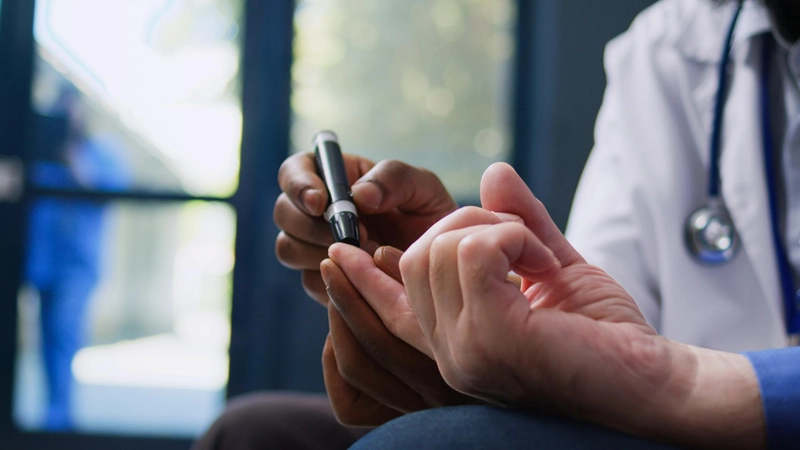- Published on: Jan 20, 2023
- 3 minute read
- By: Secondmedic Expert
Flatten Your Stomach: The Best Exercises For Belly Fat Reduction
Belly fat can be a stubborn and unsightly problem for many people, but the good news is that there are exercises that can help target and reduce it. In this blog post, we will discuss the top exercises for belly fat that you can add to your fitness routine to help achieve a flatter stomach.
-
Crunches: Crunches are a classic exercise for targeting the abdominal muscles. They work by contracting the rectus abdominis, which is the muscle that runs down the front of your stomach. To perform a crunch, lie on your back with your knees bent and your hands behind your head. Slowly lift your shoulders off the floor, then lower them back down. Repeat this movement for several reps.
-
Planks: Planks are another effective exercise for targeting the abdominal muscles. They work by engaging the transverse abdominis, which is the muscle that wraps around your waist and helps to pull in your stomach. To perform a plank, start in a push-up position with your hands directly under your shoulders and your body in a straight line from head to toe. Hold this position for 30 seconds to a minute, then rest and repeat.
-
Russian Twists: Russian twists are a great exercise for working the obliques, which are the muscles that run along the sides of your waist. To perform a Russian twist, sit on the floor with your knees bent and your feet flat on the floor. Lean back slightly and lift your feet off the floor. Hold a weight or a medicine ball with both hands, and twist your torso to the right, then to the left. Repeat this movement for several reps.
-
Cardio: Cardio exercises such as running, cycling, or swimming, are great for burning calories and reducing overall body fat. This will help to burn fat from the belly area as well.
-
High-Intensity Interval Training (HIIT): High-Intensity Interval Training (HIIT) is a type of cardio that alternates short bursts of intense activity with short periods of rest or low-intensity activity. This type of cardio can be especially effective for burning belly fat.
In addition to these exercises, it is important to maintain a healthy diet and get enough sleep. It is also important to note that spot reduction is not possible, meaning that you can not target a specific area of your body to lose weight, but by following a healthy diet and doing regular exercise you will lose weight all over your body, including belly fat.
In conclusion, belly fat can be a frustrating problem, but there are exercises that can help target and reduce it. Incorporating crunches, planks, Russian twists, cardio, and HIIT into your fitness routine can help you achieve a flatter stomach. Remember to also maintain a healthy diet, get enough sleep, and consult a doctor or a personal trainer before starting any exercise program.
more
-
Bicycle Crunches: Bicycle crunches are a variation of the classic crunch that also works the obliques. To perform a bicycle crunch, lie on your back with your knees bent and your hands behind your head. Bring your right elbow towards your left knee as you straighten your right leg. Then, switch sides and bring your left elbow towards your right knee as you straighten your left leg. Repeat this movement for several reps.
-
Leg Raises: Leg raises are an effective exercise for targeting the lower abdominal muscles. To perform a leg raise, lie on your back with your hands at your sides. Slowly lift your legs off the floor and raise them towards the ceiling. Lower your legs back down and repeat for several reps.
-
Burpees: Burpees are a full-body exercise that can also be effective for burning belly fat. To perform a burpee, start in a standing position, then drop down into a squat and place your hands on the ground. Kick your feet back into a push-up position, then jump your feet back up to the squat position. Stand up and repeat for several reps.
-
Side Planks: Side planks are a variation of the traditional plank that targets the obliques. To perform a side plank, start in a plank position on your right side, with your right elbow directly under your shoulder and your feet stacked. Hold this position for 30 seconds to a minute, then switch sides.
-
Jumping Jacks: Jumping jacks are a classic cardio exercise that can be effective for burning belly fat. To perform a jumping jack, stand with your feet together and your arms at your sides. Jump and spread your feet out to the sides as you raise your arms above your head. Jump back to the starting position and repeat for several reps.
It is important to remember that in order to see results, consistency is key. Stick to a regular exercise routine and combine it with a healthy diet and enough sleep, this will help you lose belly fat over time. Additionally, it's recommended to consult a doctor or a personal trainer for guidance and to make sure your exercise routine is safe and appropriate for you.










